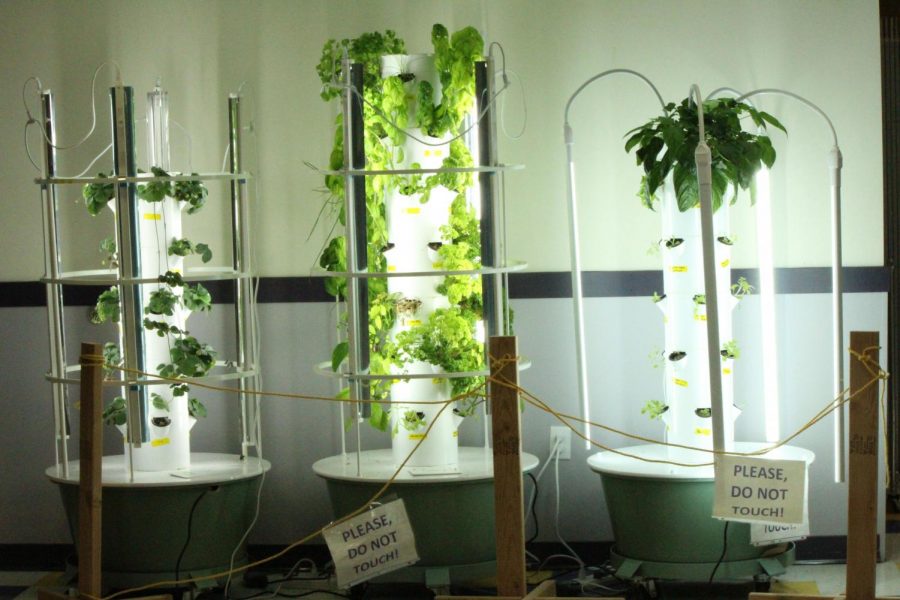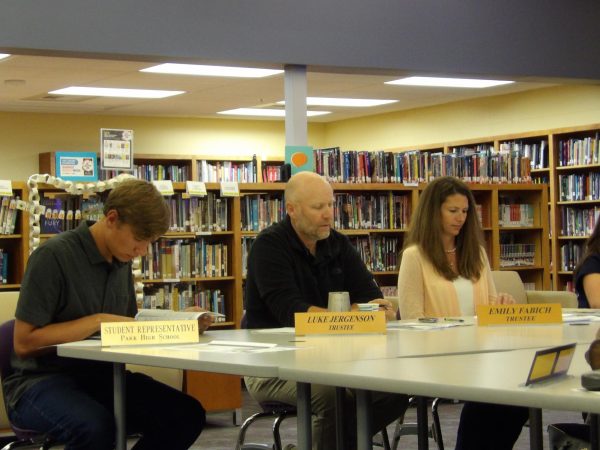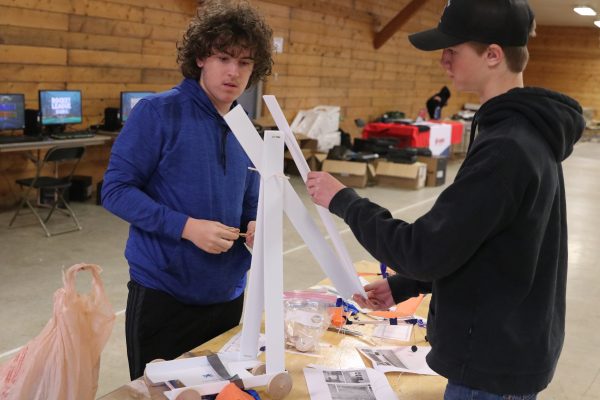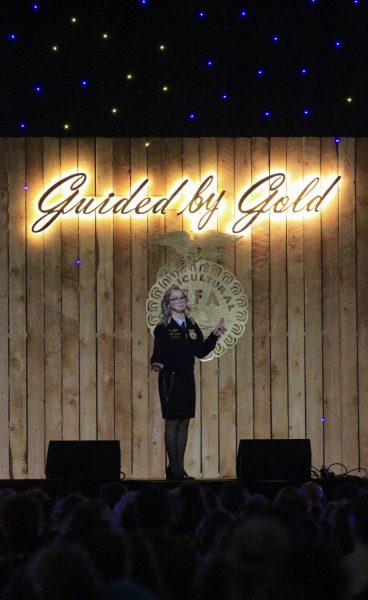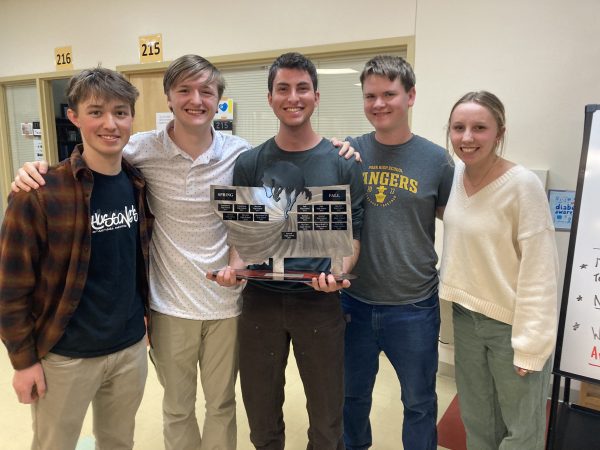Tower Gardens help grow space-efficient food at PHS
Retired lab scientist Bob Frisbey brings cutting edge technology to our halls
Three tower gardens, located outside the Rec Plex, have been recently planted with a variety of herbs, vegetables, and berries. Special education students are helping plant the towers.
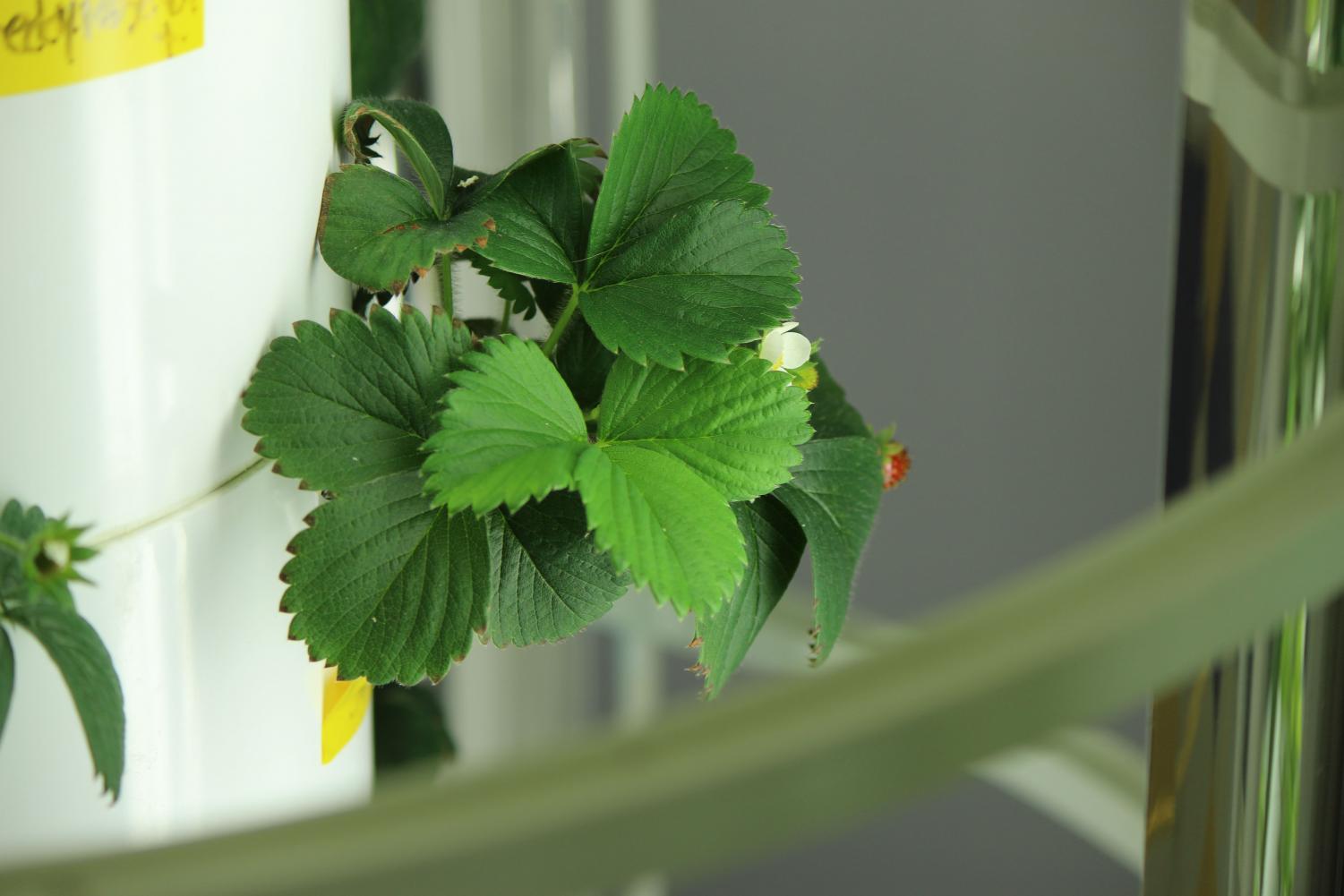
A young strawberry grows on one of three aeroponic towers in the Park High Lobby.
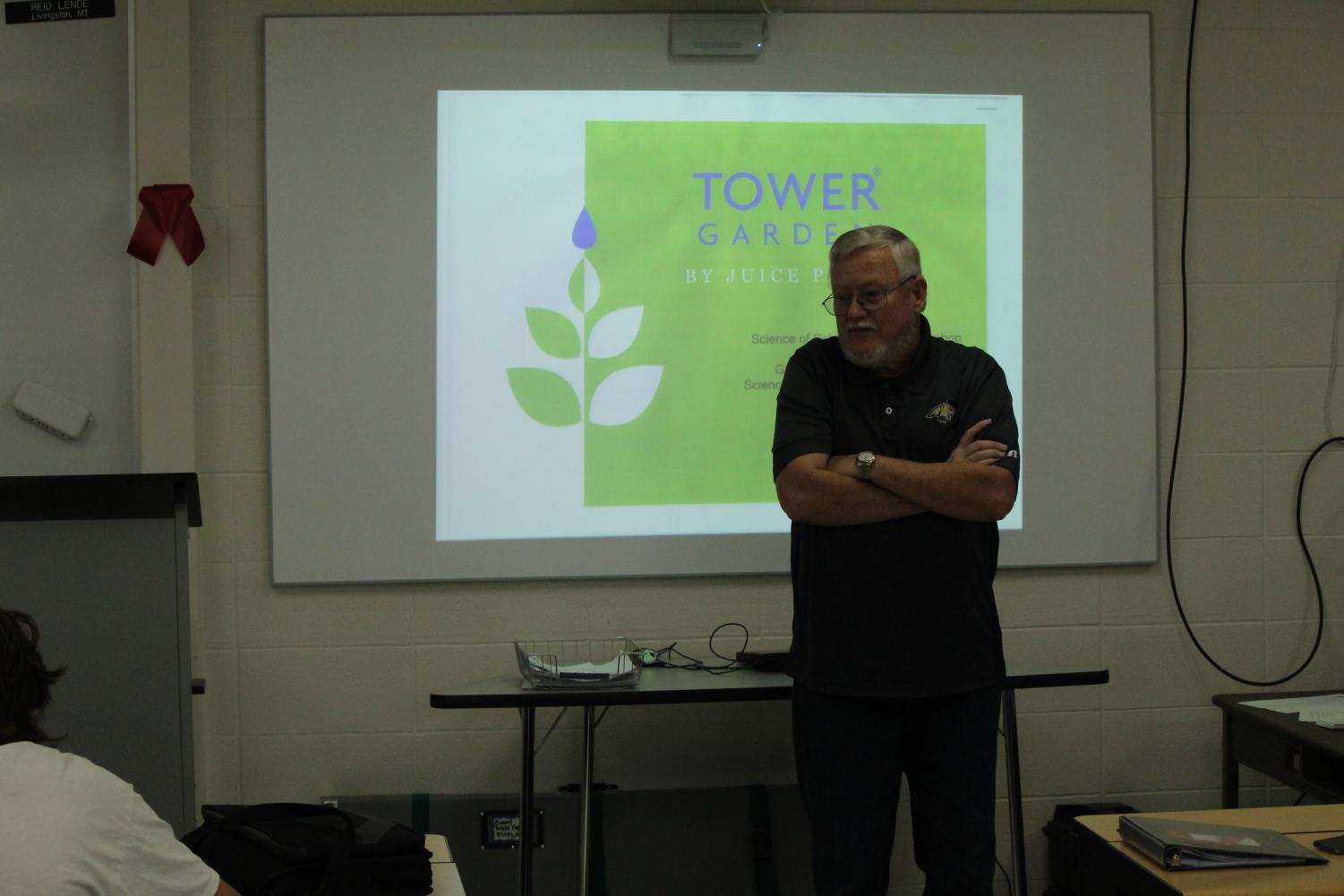
Bob Frisbey presents the facts about aeroponics to the 5th period Journalism class.
They first displaced a table of locals in the cafeteria. They were rather bothersome with their bright L.E.D. light strips. After producing leafy greens for the PHS salad bar and moving to a less intrusive spot outside of the Recplex, the towers found their home in the lobby.
Bob Frisbey, a Clinical Laboratory Scientist recently retired from Livingston Health Care, introduced aeroponics to Park High School last spring. This fall, he has recruited students from the Life Skills program to help plant greens in the tower.
The three aeroponics towers, which Frisbey calls “the leading edge in gardening technology,” have broken ground on the frontier of a shrinking world running out of land.
Seedlings are planted in the side of the tower. The roots are suspended in the air on the inside, and a pump circulates water to nourish all plants evenly. A nutrient mixture put in the water provides the nutrients plants normally get from the soil, so no dirt is used.
Plants grow three times faster using ten percent of the water that traditional farming uses, Frisbey explained. This makes them a good growing method for rooftops and in buildings. The lights used for indoor towers only cost about $6.20 per month of electricity to run, making them quite affordable.
Produce from these towers has been showing up in lunches at the high school. Last year, Frisbey said the school’s cafeteria harvested 20 to 25 pounds of lettuce as well as a variety of herbs. Currently growing in the three towers are parsley, basil, cilantro, lettuce, arugula and even strawberries.
While Frisbey is mostly alone in this endeavor, he has assistance from students in the life skills program at PHS, and “some employees, ladybugs,” he joked. The lady bugs help keep these towers pest free.
The Life skill students have repotted multiple times within the towers and harvested many leafy greens and herbs, said Life Skills program director Heidi Claar. Rachael Jones of Farm to School used the help of the Summer Links program kids to harvest over the summer.
Frisbey has helped jump start other aeroponic programs throughout the state including Lodgepole, Moore and Poplar. Later this week, Frisbey said he and his wife will be setting up a tower at Montana State University Billings in the Native American Studies department.
If any students are interested in helping with the Tower Gardens, Frisbey said he would welcome their assistance and could perhaps offer service hours.

